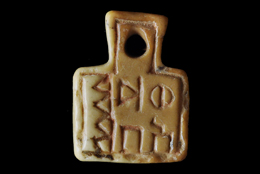
Collection of the objects from the Peabody Museum of Harvard University
The Peabody Museum of Archaeology and Ethnology is among the oldest ethnographic museums in the world with one of the finest collections about human cultural history found anywhere. It was established by the philanthropist George Peabody in 1866. Thanks to gifts, fieldwork, and purchases, today it houses about 1.2 million individual objects, consisting of archaeological and ethnographic findings, paintings, drawings, prints and photographs.
Thanks to gifts, fieldwork, and purchases, today it houses about 1.2 million individual objects, consisting of archaeological and ethnographic findings, paintings, drawings, prints and photographs.
The South Arabian artifacts housed in the Peabody Museum are part of a collection of two hundred items acquired by the museum in 1935 and 1936 from Mr. Israel Subeiri of Ṣanʿāʾ, through the anthropologist Carleton S. Coon, at that time Professor at the Harvard faculty.
The collection comprises small artefacts such as stone and bronze pendants, beads and seals, which are inscribed with monograms or propitiatory formulas. There are also two cubic incense burners inscribed with name of aromata.
The Peabody Museum South Arabian items were photographed in June 2012 by a team of the DASI project including prof. Alessandra Avanzini, Alessia Prioletta (epigraphist) and Gianluca Buonomini (photographer). The inscriptions and the objects were catalogued in DASI by Alessia Prioletta and Alessandra Lombardi.
Photos are courtesy of the Peabody Museum.